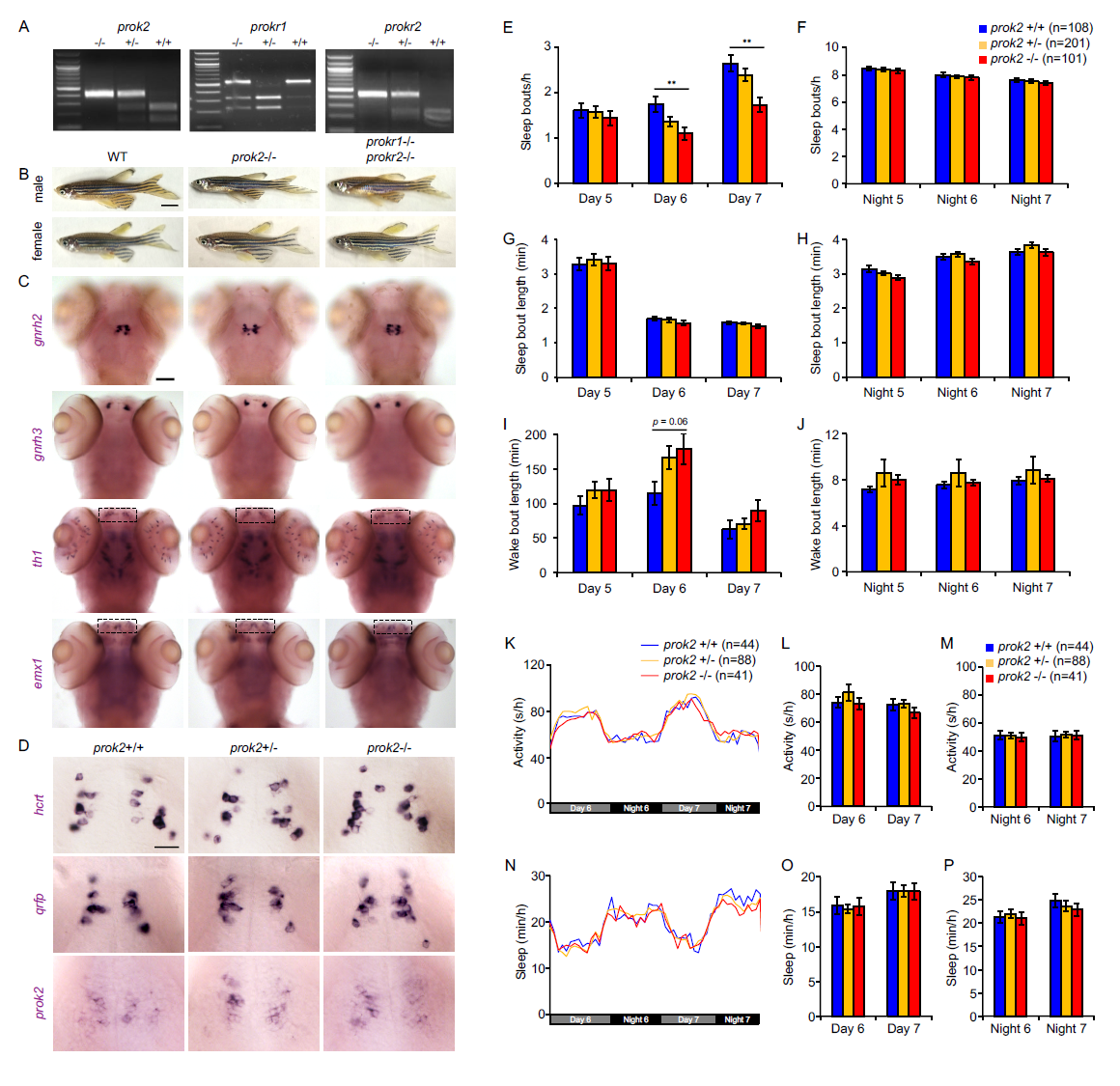Fig. S5
prok2 and prok receptor mutants lack development defects associated with Kallmann syndrome, sleep architecture of prok2 mutant larvae, and prok2 mutant larvae exhibit normal circadian regulation of locomotor activity and sleep. Related to Figures 5 and 6. (A) Representative genotyping images for prok2, prokr1 and prokr2 mutants. Bands for homozygous mutant, heterozygous mutant and homozygous WT are described in STAR Methods. (B) Images of representative WT, prok2-/-, and prokr1-/-; prokr2-/- 6-month old adult zebrafish. All fish are similar in size and morphology. (C) Representative images of ISH using probes specific for gnrh2, gnrh3, th1 and emx1 in 5 dpf WT, prok2-/-, and prokr1-/-; prokr2-/- larvae. Dashed boxes indicate olfactory region. (D) Representative images of ISH using probes specific for the hypothalamic neuropeptides hcrt, qrfp and prok2 in prok2+/+, prok2+/- and prok2-/- larvae. Larvae of all genotypes show similar expression levels and patterns of each gene. There is no apparent nonsense-mediated decay of prok2 mRNA in prok2 mutants. Animals were genotyped by PCR after imaging. Scale bars: (B) 5 mm, (C) 100 μm, (D) 10 μm. (E-J) Sleep architecture of prok2 mutant larvae. The increased activity and decreased sleep during days 6 and 7 of development in prok2-/- larvae is due to a decrease in the number of sleep bouts (E), with a trend towards longer waking bouts (I). (K-P) Larvae entrained in 14:10 hr LD conditions for 5 days and then monitored in DD maintain normal circadian rhythms of locomotor activity (K-M) and sleep (N-P), with no significant differences between prok2-/-, prok2+/- or prok2+/+ siblings. Data from 5 experiments (E-J) and 2 experiments (K-P) combined are shown. Bar graphs show mean ± SEM. n = number of larvae. **p<0.01 by one-way ANOVA, with post-hoc Dunnett’s test compared to WT.

